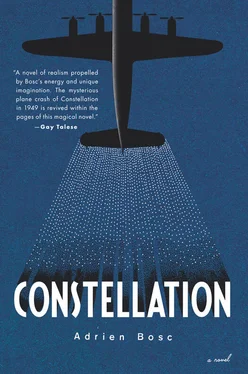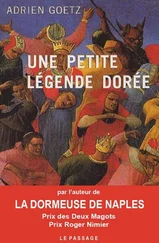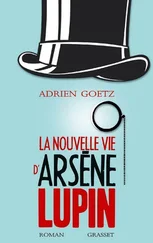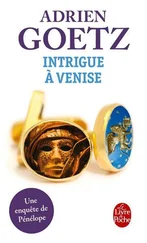ICI REPOSE
GINETTE NEVEU
1919–1949
À LA MÉMOIRE DE JEAN NEVEU
SON FRÈRE
1918–1949
TOUS DEUX VICTIMES
DE LA CATASTROPHE
AÉRIENNE DES AÇORES
LE 28 OCTOBRE 1949
HERE LIES
GINETTE NEVEU
1919–1949
TO THE MEMORY OF JEAN NEVEU
HER BROTHER
1918–1949
BOTH WERE VICTIMS
OF THE AIR DISASTER
IN THE AZORES
OCTOBER 28, 1949
And yet the burial was canceled. At the headquarters of the funeral home, Marie-Jeanne Ronze-Neveu refused to identify her daughter’s body.
22. From Around the World
Learn how to sell to buy to resell.
— Blaise Cendrars, “Tu es plus belle que le ciel et la mer” (“You Are More Beautiful Than the Sky and the Sea”)
Airplane flight is a luxury. The only working-class passengers — the five Basque shepherds and Amélie Ringler, the spool operator from Mulhouse — were on board solely because the former had U.S. contracts and the latter’s godmother had summoned her. “Airplane of the Stars,” trumpet the Air France brochures, the travelers are privileged beings, an elite. It’s also the means of transportation chosen by men in a hurry, businessmen. On the night of October 27, those boarding at Orly Airport are New World traders, import-export specialists. A Tower of Babel, the list printed in the newspapers further enlarges the spectrum of continents the passengers represent. A precipitate of the whole world, whose chemical formula might be unpacked as follows:
John Abbott, fifty-four, was returning from Syria with his wife, Hanna, thirty-four, whom he married a month earlier, they lived in Butte, Montana.
Mustapha Abdouni, twenty-seven, a Syrian-born farmer, was going to meet his wife in Logan, Utah, where he was to meet his twenty-one-month-old son for the first time.
Joseph Aharony, forty-five, an Israeli lawyer.
Eghline Askhan, thirty-four, a Turkish importer.
Edouard Gehring, twenty-nine, an American manufacturer.
Remigio Hernandores, forty-nine, a Cuban industrialist.
Emery Komios, thirty-two, an American lawyer.
Yaccob Raffo, twenty-three, an Iraqi chauffeur.
Maud Ryan, née Gibrat, fifty-three, had married an American soldier in 1919. She was returning from a visit to her French family. She lived in Atlantic City.
Margarida Sales, née Castel, thirty-nine; her husband, Philip Sales, forty, a New York exporter.
Raoul Sibernagel, fifty-nine, president of the Selsi Company of New York, an optical equipment importer, was returning from a business trip to Paris. His wife remained hopeful until the last possible moment, saying to reporters in the reception area at Idlewild airport: “If there are any survivors, my husband will be one of them, he has always been lucky!”
Irene Sivanich, fifty-seven, of Detroit, a widow and an emigrant from Yugoslavia. She had been visiting her mother.
Edward Supine, thirty-nine, a Brooklyn lace importer, was returning from a visit to the lace workshops in Calais.
James Zebiner, fifty-two, a Mexican businessman.
23. Red for Ginette, Green for Amélie
Twice have I, victorious, crossed the Acheron:
Playing in turn on Orpheus’s lyre
The sighs of the Saint, the cries of the Enchantress.
— Gérard de Nerval, “El Desdichado”
The young woman’s body at the funeral parlor, with its blackened face and green dress, is not her daughter, she is sure of it, she insists. The fingernails are much too long, Ginette’s are trimmed short so that they won’t interfere when she plays. The staff reason with Marie-Jeanne Ronze-Neveu, they even repeat the myth about hair and nails continuing to grow after death. The atmosphere is oppressive, the officials, sure of their ground, agree in low tones that the woman is suffering from denial. It is nothing of the sort. The dress does not belong to her daughter, the necklace with the Egyptian medallion is one she has never seen before, the body’s slender build has nothing to do with her daughter’s broad shoulders. Marie-Jeanne won’t relent, grows excited, and the corpse is finally transferred to the coroner’s office. After an examination of the teeth, there can be no doubt. It’s not Ginette Neveu. They look through the unknowns, who will be buried together in the commemorative vault at Père-Lachaise within a few hours, for any sign of the young prodigy. Only one woman is discovered among the six mangled bodies, and it is patently not Ginette. To the family’s grief over her death is added the torment of uncertainty. Fate is intent on punishing the Neveus, who learn that the body of neither child has returned from the Azores.
An error is possible, someone theorizes. Ginette’s brother-in-law, M. Barret, leads the investigation. He examines the Air France passenger list, concentrates on the women between twenty and thirty, several names fit the bill: Amélie Ringler, the spooler from Mulhouse, twenty-seven; Hanna Abbott, Syrian, thirty-four; Françoise Brandière, French-Cuban law student, twenty-one; Thérèse Etchepare, Basque shepherdess, twenty-one; Suzanne Roig, stewardess, thirty. Armed with a clue, the Egyptian medal, he calls each of the families. On November 26, he manages to reach Xavier Ringler, Amélie’s father. It is unquestionably his daughter’s pendant, and, in tears, the man announces that his daughter was buried on November 11 at the cemetery in Bantzenheim. After calling the prefecture of the Haut-Rhin department, Barret goes immediately to Mulhouse, where he visits the Ringler family, 24 passage Marignan. They describe the funeral, he is led to the grave. At 8:00 a.m., the employees of the funeral home dig up the zinc coffin and open it with a pry bar. No question, the red dress with beige sleeves belongs to Barret’s sister-in-law Ginette. A hearse carries the casket back to Paris. On November 29, the Neveu family assembles at the Père-Lachaise Cemetery, section 11, a few plots from Frédéric Chopin, and Ginette Neveu is finally laid to rest. At the same time, Xavier Ringler travels to Paris to identify Amélie’s body; within a few days, a funeral is again held in Bantzenheim. A new grave is dug, the right one this time. The other will remain empty. Only a wooden cross planted in twice-disturbed soil indicates the mishap of the red dress and the green.
Written kisses don’t reach their destination,
ghosts drink them along the way.
— Franz Kafka, Letters to Milena
The results of the investigation failed to provide an explanation for the tragedy in the Azores. The metal viscera of the carcass revealed nothing of the Constellation’s secret. How did the plane drift to the neighboring island of São Miguel, and what concatenation of circumstances led to its colliding with the mountain’s peak? What devil contrived to coordinate so many errors, causing a crash whose probability was nearly zero?
This nearly at the center of attention, this chance element whose consequences must be teased out to separate it from pure fate. Two laws govern the history of flight and combine in the public mind to transform a chain of rational causes into a magical sign of fate: the law of series and Murphy’s law. The first comes from a blindness toward happy outcomes and the stress put by the media on tragic events within a series. The second, its corollary, derives from the absurd notion that a succession of mishaps proves a catastrophe to be predestined: “Everything that can go wrong, will go wrong.” The worst-case-scenario concept has governed the rules of aviation, which tries to beat the odds by resorting to precaution. In 1949, there was still no way to make the dead speak. The ancestor of the black box, the hussenograph, an audioless photographic recorder invented by François Hussenot, is not yet in general use. All the investigators have to go on are the radio exchanges with ground control and the plane’s wreckage. Once these two leads have been exhausted, an exact reenactment of the flight might possibly bring the relevant errors to light. The shadow aircraft, a Lockheed Constellation, registration F-BAZO, will retrace the flight path and attempt to initiate a dialogue from beyond the grave with the wading bird of the Azores. In rhetorical terms, the airplane preparing to take off from Orly on December 7, 1949, is a prosopopoeia. This book is not one. The fiction of an omniscient narrator, slipping into the victims’ clothes as you might change costumes in a small theater of the period, is not proposed. The description of the flight, the arrangement of the characters within the whole as represented by the plane is the only viewpoint, the only theatricality. Let’s hope it doesn’t hide any others. The crew of the shadow aircraft was appointed by a ministerial order, published in the Journal officiel for November 9, 1949. It includes Lévis-Mirepoix, the inspector for civil and commercial aviation, and Fournier, the air force’s chief operating engineer. Also in the crew were Maurice Bellonte, head of Air France’s accident investigation division; Jean Dabry, who will man the controls, a pilot of similar experience to F-BAZN’s captain, Jean de La Noüe; several navigators; and an engineer from the French Weather Bureau. Representatives of the manufacturer, Lockheed Aircraft, concerned for the fate of the Constellation, are also present. The witness-plane takes off from the runway at Orly at 4:00 p.m.
Читать дальше












